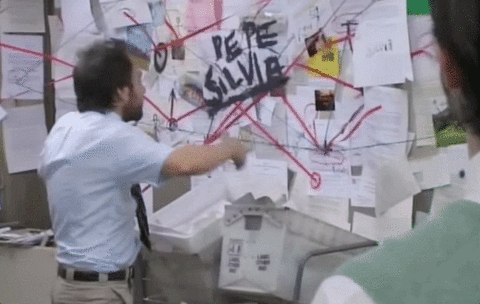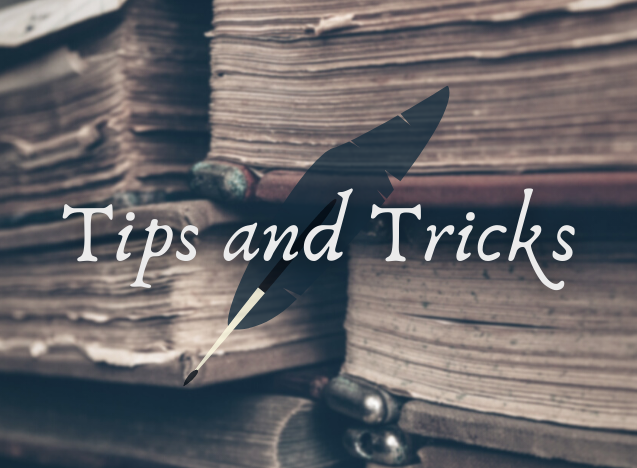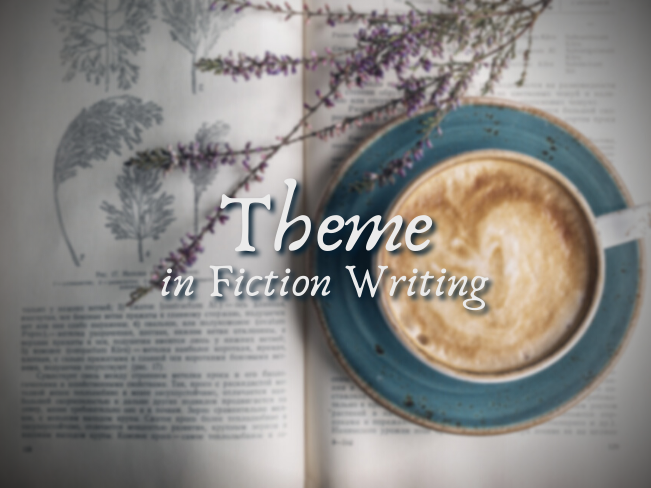Whiteboard scenes (also occasionally called ‘gather the troops’ scenes) bring characters together to discuss a plan or strategy. They typically precede a major action sequence and provide context, clarify logical flow, and raise the stakes of the action to follow.
A well-written whiteboard scene is a blueprint the reader can follow through the action sequence, allowing them to digest a rapidly evolving series of events alongside the character without confusion.
But not all action sequences need a whiteboard scene to precede them.

When I need whiteboards scenes… and when I don’t
When I was a new writer, I overused whiteboard scenes to a fault. For the most part, I was able to identify places where they were absolutely necessary: before battles or climactic fights during which I couldn’t afford to slow down to give the reader contextual explanations. They helped me craft a blueprint for the reader to follow so they could know, at all times, whether the protagonist was winning or losing their fight.
Because of my association between whiteboard scenes and fight/confrontation scenes, however, I started using them everywhere. Whenever a character prepared for a major battle—whether literal or metaphorical—I’d have them plan their every move beforehand. This was a mistake. I ended up with whiteboard scenes for everything from council meetings, to interrogations, to epic battles.
In some cases, my readers ended up slogging through the same scene twice: once, imagined in my character’s head, and a second time, acted out in ‘real life’.
Over time, I came to realize that the nature of the action determines whether I need a whiteboard scene.
The questions I ask myself before putting in a whiteboard scene are:
- How much contextual knowledge of the plan does the reader need in order to understand what happens in the action scene?
- Is the action scene so fast-paced that I can’t work in the steps of the plan throughout that scene without ruining the tension and pacing?
- Does the plan fail?
If I can answer yes to any of those questions, I need to include a whiteboard scene.

What a good whiteboard scene should achieve
A well-written whiteboard scene provides a blueprint for the coming action, one the reader can use as reference when the fists start flying. Here’s a checklist for all of the components I try to include in my whiteboard scenes and why they’re so important.
Whiteboard scenes should:
Clarify action with logic
Use whiteboard scenes to explore the internal motivations of your characters. What do they seek to gain from the action scene? Is it a heist scene where they’re stealing a precious artifact? A fact-finding mission where they’re extracting a file folder from a mad scientist’s office? A battle they need to win to stave off the legions of the damned?
Why are they getting themselves into this situation—and why is action the best option?
Why is victory important to them, and what do they hope to achieve at the end of the scene?
By answering these questions, we identify our protagonist’s direction and purpose, which gives the reader a goal to keep their eye on throughout the action sequence. Moreover, it ties the internal character arc to the external, demonstrating how the character believes winning will get them what they think they need to solve their larger, story-wide problem.
Without clarifying logic, the action sequence loses its meaning.
Set the stakes
Setting the stakes is the partner to clarifying logic. Here, we identify what the protagonist loses if they fail. What will happen to them and their team? What’s the worst-case scenario? Humiliation? Imprisonment? Death?
This part of the whiteboard scene can also introduce goals that raise the stakes. Does the rollerdome team need to score a certain number of points to make it to the finals? Is the SWAT team competing with a ticking clock? Does the defense of the Great Keep need to hold out against zombies until sunrise? Whatever the case, adding a timeline or metric for success—or failure—will further add context to the action sequence.
Identify obstacles
We can further raise tension by identifying the challenges and difficulties the protagonist expects to encounter during the action sequence. Named challenges make it clear to the reader how much the protagonist must risk in order to get their reward. Moreover, these challenges, laid out in sequence, provide the heart of the action sequence’s blueprint.
By detailing challenges, we tell the reader what to expect throughout the action sequence. This lays out the path the protagonist plans to take through the sequence and why they believe it will result in success.
That way, when unforeseen obstacles pop up, the reader is as surprised as the character—and the reader understands the possible repercussions of these unforeseen obstacles without the need for spur-of-the-moment explanation.
Without a whiteboard scene detailing expected challenges, the unforeseen would be neither tense nor surprising, because when everything in a scene is a surprise, nothing is.

By clarifying logic, stakes, and obstacles, we build solid whiteboard scenes with which to springboard our protagonists into the heart of the action.
But wait! There’s more:
The plan must go awry
If I were to distill the importance of the whiteboard scene into a single sentence, I’d say this:
Whiteboard scenes help reader experience dread and panic alongside the protagonist when the action sequence invariably goes sideways.
In other words, a good whiteboard scene sets up a twist—one that results in the character failing to meet their goal.
Whether big or small, something must happen during the action sequence to set back your protagonist. On a large scale, this might mean losing a crucial battle. On a smaller scale, your protagonist might find the artifact they were searching for only to realize the artifact isn’t what they need to break their curse. In the middle of those two extremes is the pyrrhic victory; your protagonist gets what they wanted, but the cost is so great their win becomes a loss.
Without the blueprint provided by a well-crafted whiteboard scene, these twists lose their meaning and fail to elicit a strong emotional response from a reader.

Though whiteboard scenes aren’t always necessary, they’re a crucial tool in every writer’s toolbox. Whiteboard scenes provide grounding logic for busy action scenes, raising the stakes and giving the reader a guideline through which they can experience the same tension, surprise, and dread as the protagonist when things inevitably go awry.
Let’s talk whiteboard scenes in the comments!
- Do you include whiteboard scenes in your own writing?
- How do you know when and where to add them?
- Do you have any other tips for crafting whiteboard scenes? Let me know in the comments!


 Tips for Writing Action Scenes
Tips for Writing Action Scenes Theme in Fiction
Theme in Fiction
Leave a Reply